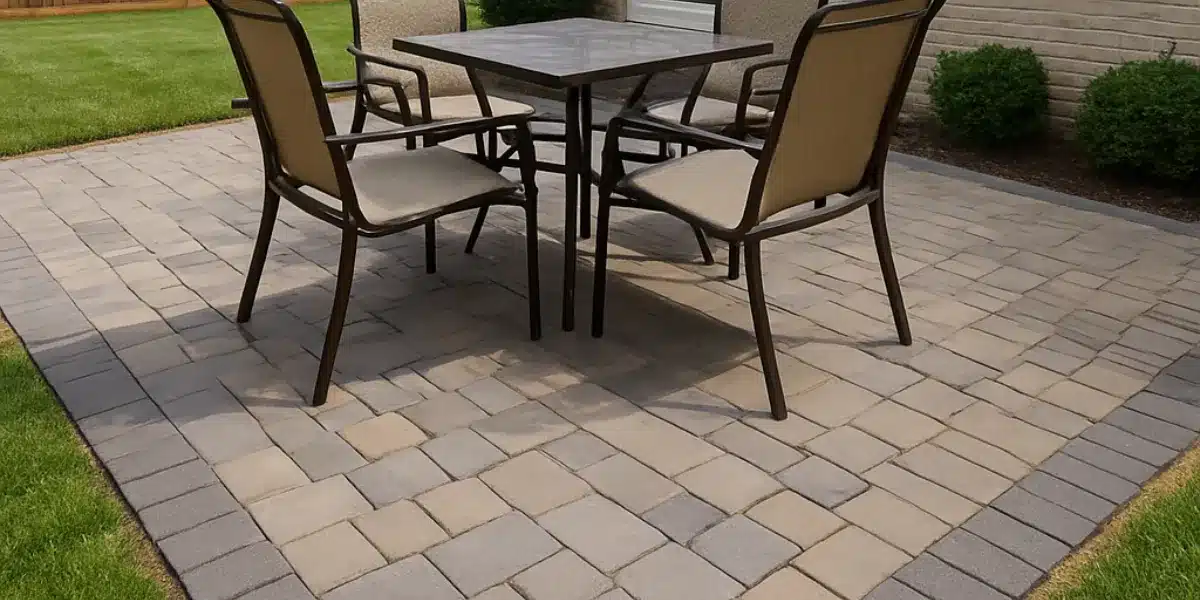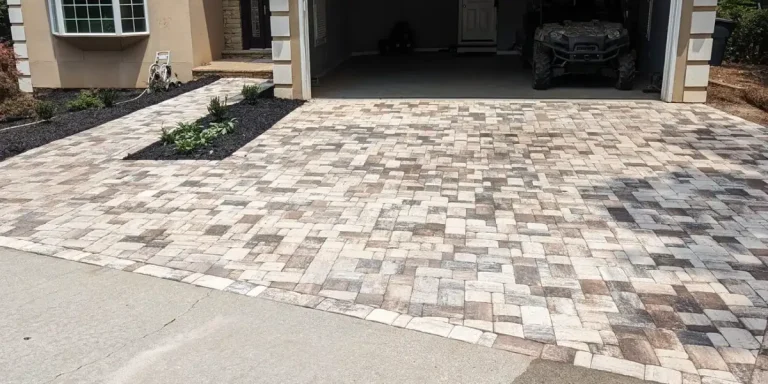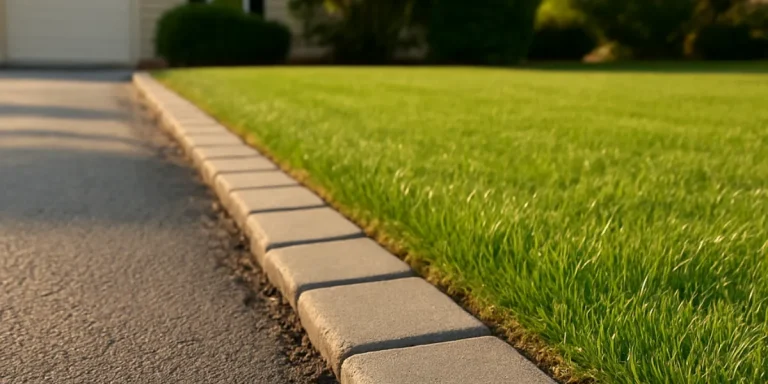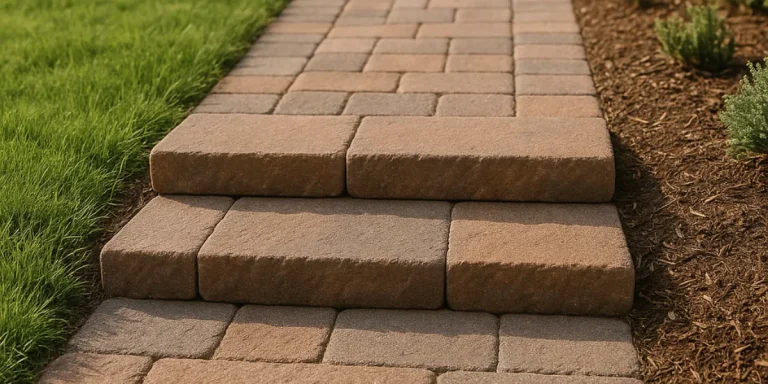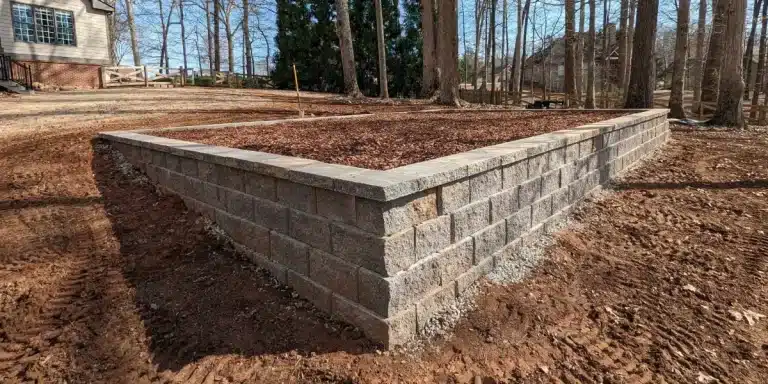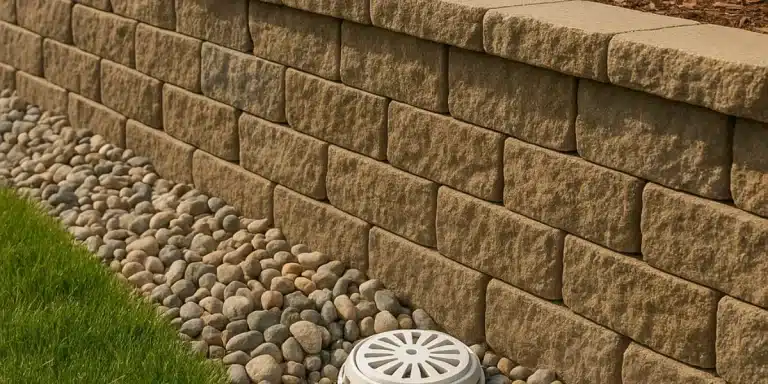Why Your Paver Patio Is Sinking and How to Fix It
A professionally installed paver patio should be solid, level, and built to last. But if you’ve started noticing low spots, pooling water, or tripping hazards, it likely means your pavers are sinking. This is a common issue we see throughout Gainesville and surrounding Northeast Georgia communities, and it’s one that should be addressed sooner rather than later.
At Razor Sharp Lawn and Landscape, we specialize in diagnosing and repairing sinking patios. In this post, we’ll explain the most common causes of patio settlement, how to fix the issue properly, and how to prevent it from happening again.
Common signs your paver patio is sinking
Before we get into the technical causes, here’s what to look for:
-
- Uneven or sloped surface
- Pavers that rock or wobble underfoot
- Water collecting in certain areas after rain
- Gaps between pavers or at the edge of the patio
- Settled or sunken sections near steps, downspouts, or high-traffic zones
These symptoms usually point to issues beneath the surface—and a temporary patch won’t solve the real problem.
Why paver patios sink in Georgia
Georgia’s unique combination of clay-rich soils, heavy rain, and fluctuating moisture levels make it essential to build patios on a properly prepared foundation. Unfortunately, many patios in Gainesville, Hoschton, and surrounding areas begin to settle or sink because of shortcuts taken during installation. At Razor Sharp Lawn and Landscape, we frequently repair patios that were built without attention to long-term stability.
Here are the most common reasons paver patios sink—and why these issues are especially common in our region:
1. Inadequate base depth
A strong patio starts with a deep, compacted gravel base. Pavers rely on this foundation to prevent shifting and settling over time. In Georgia, where clay soils expand when wet and shrink when dry, a shallow base is one of the most frequent causes of failure.
What goes wrong:
-
-
- Builders often use only 2–3 inches of base material when 4–8 inches is needed.
- The result is compression over time, leading to sunken areas or uneven surfaces.
- Edges and high-traffic zones tend to sink first, especially without reinforced support.
-
At Razor Sharp Lawn and Landscape, we customize base depth based on site conditions and expected load—ensuring lasting stability for every paver patio installation we perform.
2. Poor compaction
It’s not enough to add gravel—the base must be compacted in thin, even layers. When this step is skipped or rushed, the base remains loose and continues to settle long after the patio is installed.
Why this matters in Georgia:
-
-
- Clay-heavy soils retain moisture and shift easily without support.
- Improperly compacted materials form soft spots, leading to dips or rocking pavers.
- Wet seasons cause the subsoil to swell, loosening pavers even further.
-
Every patio built by Razor Sharp Lawn and Landscape is compacted using commercial-grade equipment for long-term durability.
3. Water drainage issues
Water management is critical to the life of any paver patio—especially in regions like Northeast Georgia, where rainfall is frequent and sometimes intense. Without proper drainage, water can seep beneath the patio and erode the base material.
Common drainage problems include:
-
-
- Downspouts discharging near the patio’s edge
- A lack of slope away from the home or patio surface
- Missing edge restraints that allow movement and separation
- Inexpensive or poorly swept joint sand that washes away easily
-
Razor Sharp Lawn and Landscape incorporates slope grading, edge restraints, and drainage solutions like swales or dry creek beds into our patio projects to ensure your investment lasts.
4. Improper subgrade preparation
Beneath the gravel base lies the subgrade, or native soil. If this isn’t compacted and leveled before construction begins, the base will shift—no matter how well it’s built.
What we often see:
-
-
- Landscapers skipping soil stabilization altogether
- Settling in corners or central areas where fill dirt wasn’t compacted
- Movement in sloped yards or areas with poor drainage
-
When Razor Sharp Lawn and Landscape builds or repairs patios, we always inspect and prepare the subgrade to ensure it's capable of supporting the structure above it.
5. Erosion or washout
If your patio is located near a slope or lacks runoff control, heavy rains can slowly erode the materials underneath. This is especially common along the outer edges of patios or where landscape beds and lawns meet hardscape.
Erosion often causes:
-
-
- Gaps to form between pavers and adjoining soil or mulch
- Pavers to collapse inward as bedding sand and gravel are washed away
- Weed growth and instability in areas where joint sand is lost
-
To protect your outdoor living space, Razor Sharp Lawn and Landscape offers custom drainage and erosion control solutions—such as retaining walls, regrading, or deeper paver edge stabilization.
How we fix a sinking paver patio
At Razor Sharp Lawn and Landscape, we don’t believe in surface-level fixes. Sinking patios are a sign of deeper structural issues, and the only way to ensure long-lasting results is to address the root cause. Whether your patio was poorly installed or impacted by drainage or soil movement, we follow a proven step-by-step process to restore its strength, safety, and appearance.
Here’s how we professionally repair sinking paver patios in Gainesville and surrounding Northeast Georgia areas:
Step 1: Evaluate the cause
Every successful repair starts with a proper diagnosis. We begin by thoroughly inspecting the sunken section of your patio—and its surroundings—to determine exactly what caused the issue. This includes checking for:
-
-
- Base depth and compaction
- Signs of erosion or washout
- Downspout drainage or slope problems
- Subgrade stability beneath the affected area
-
By identifying the exact failure point, Razor Sharp Lawn and Landscape can offer a solution tailored to your site conditions—not just a one-size-fits-all approach.
Step 2: Remove the affected area
Once the problem is identified, we carefully remove the pavers in the sunken section. Each paver is cleaned and preserved for reinstallation to maintain a consistent appearance.
We then remove all failed materials beneath, including:
-
-
- Loose or washed-out bedding sand
- Compacted or degraded base gravel
- Any organic debris or unstable soil that has crept into the void
-
This clean-out is critical to ensure we’re rebuilding on a stable surface.
Step 3: Rebuild the base properly
This is where shortcuts often happen—but not with Razor Sharp Lawn and Landscape. We rebuild the patio base using high-quality, compactable stone (typically crusher run or #57 granite), installed in 2- to 3-inch layers.
Each layer is compacted using a commercial plate compactor to eliminate air pockets and maximize load-bearing strength. If the subsoil is unstable or prone to mixing with the gravel, we’ll also install a geotextile fabric barrier to keep the layers separated.
This foundational work ensures the patio won't sink again in the same spot.
Step 4: Address drainage issues
Sinking often goes hand-in-hand with water problems. To prevent future issues, we fix any drainage concerns before resetting the pavers.
Depending on the site, this may include:
-
-
- Regrading the subgrade to create positive slope away from the house
- Installing or rerouting downspouts or pop-up emitters
- Adding French drains, dry creek beds, or swales to control runoff
- Improving slope along the patio surface to shed water correctly
-
Our goal is to ensure water moves away from your patio, not under it.
Step 5: Reset and recompact pavers
With the new base and drainage system in place, we reset the original pavers in fresh bedding sand. We align the pattern carefully and use a vibratory compactor to level and lock the pavers into position.
Finally, we sweep polymeric joint sand into the spaces between the pavers. This special sand hardens when wet, helping to prevent:
-
-
- Weed growth
- Ant infestation
- Washout during heavy rains
-
The finished result is a stable, attractive patio that looks just as good as the day it was first installed—only this time, it’s built to last.
Real-world example: Gainesville patio repair
A recent client in Gainesville called us about their 5-year-old patio, which had developed a noticeable dip near the center. The original contractor had skipped compaction and left the base too thin. After removing the sunken section, we rebuilt the base with proper compaction, adjusted the slope to eliminate standing water, and reinstalled the pavers.
The result: a level, durable patio that now drains properly and feels rock solid underfoot.
Proudly serving Northeast Georgia
We provide expert hardscaping services, including paver patio repairs and new patio construction, in:
-
- Gainesville
- Hoschton
- Braselton
- Flowery Branch
- Buford
- Winder
- Jefferson
- Oakwood
- Dacula
- Commerce
Whether your patio needs minor leveling or a full rebuild, we’ve got the tools and experience to fix it the right way.
Ready to fix your sinking patio?
Don’t settle for an uneven, unsafe patio.
Contact Razor Sharp Lawn and Landscape today to schedule an on-site evaluation. We’ll diagnose the problem, explain your options, and give you a clear, honest estimate for repair or replacement.
We proudly serve homeowners in Gainesville and surrounding areas with professional hardscaping, patio installation, retaining walls, and drainage solutions built to last in Georgia’s climate.

